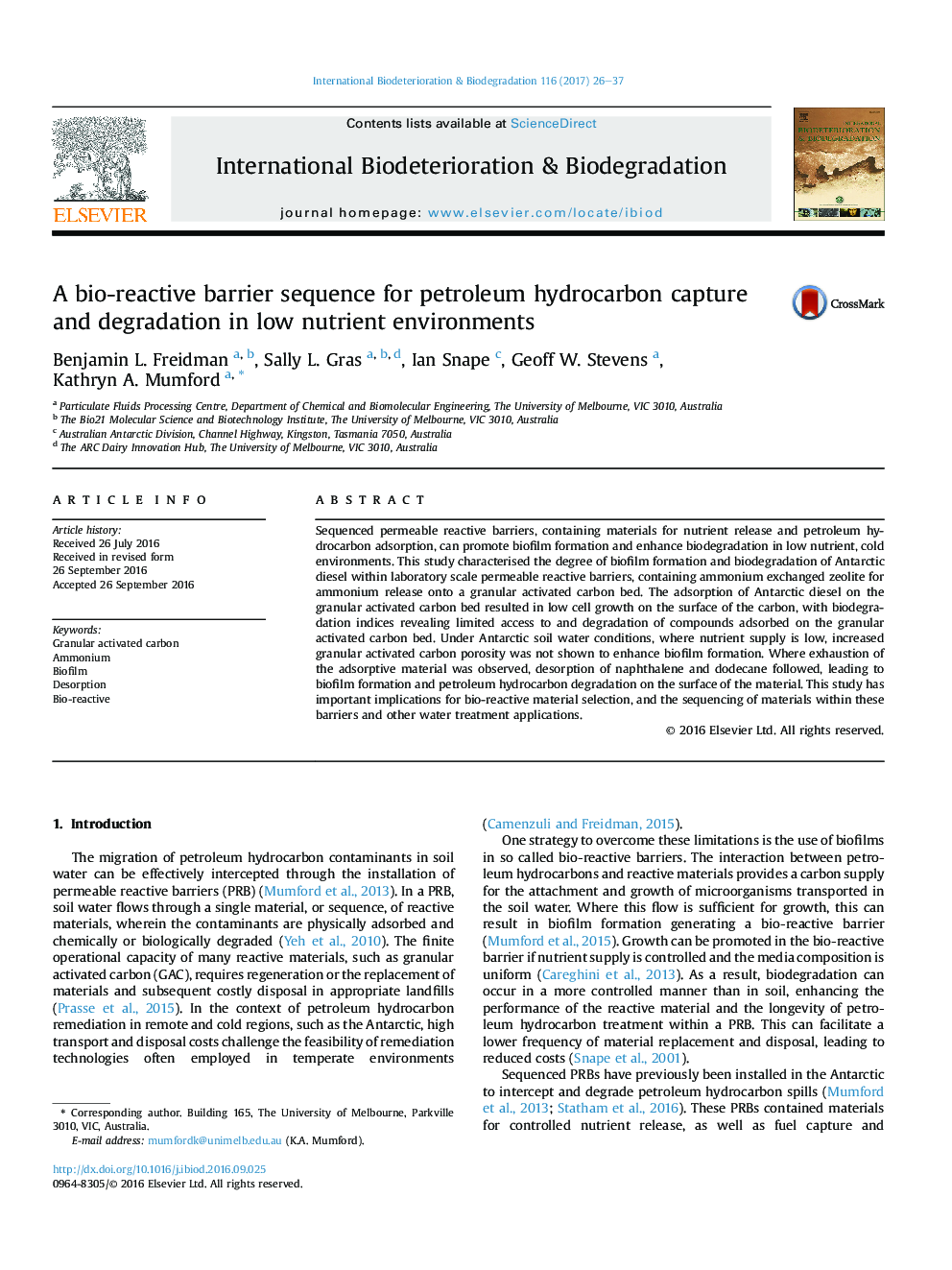| Article ID | Journal | Published Year | Pages | File Type |
|---|---|---|---|---|
| 4364052 | International Biodeterioration & Biodegradation | 2017 | 12 Pages |
•Biofilm formation and biodegradation of diesel occurred on ammonium zeolite.•Nitrogen and diesel delivery to activated carbon enhanced cell attachment.•A concentration gradient resulted in desorption of diesel from activated carbon.•Bio-reactive barriers can successfully couple adsorption and biodegradation of diesel.
Sequenced permeable reactive barriers, containing materials for nutrient release and petroleum hydrocarbon adsorption, can promote biofilm formation and enhance biodegradation in low nutrient, cold environments. This study characterised the degree of biofilm formation and biodegradation of Antarctic diesel within laboratory scale permeable reactive barriers, containing ammonium exchanged zeolite for ammonium release onto a granular activated carbon bed. The adsorption of Antarctic diesel on the granular activated carbon bed resulted in low cell growth on the surface of the carbon, with biodegradation indices revealing limited access to and degradation of compounds adsorbed on the granular activated carbon bed. Under Antarctic soil water conditions, where nutrient supply is low, increased granular activated carbon porosity was not shown to enhance biofilm formation. Where exhaustion of the adsorptive material was observed, desorption of naphthalene and dodecane followed, leading to biofilm formation and petroleum hydrocarbon degradation on the surface of the material. This study has important implications for bio-reactive material selection, and the sequencing of materials within these barriers and other water treatment applications.
